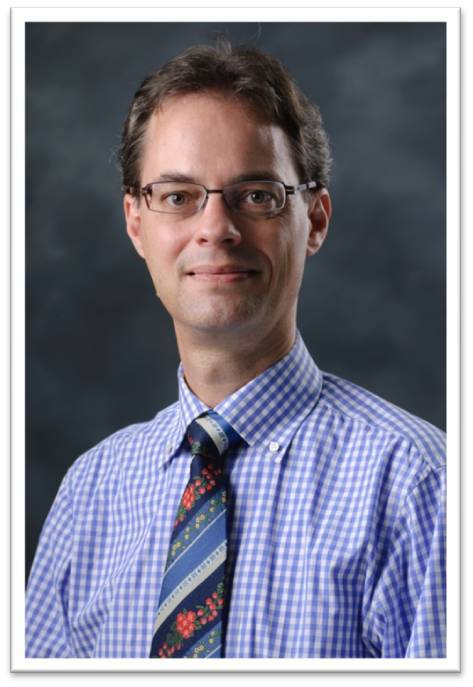Sebastian D. Fugmann
|
Sebastian D. Fugmann |
||
|
Position |
Professor |
|
|
Education |
Ph.D., University of Ulm, Germany |
|
|
|
||
|
Office Tel |
+886-3-211-8800 ext.3478 |
|
|
Fax |
+886-3-211-8700 |
|
|
Laboratory |
||
|
Spciality |
Molecular Immunology, DNA recombination and repair |
|
|
Lab & Research Interest |
||
|
All multicellular organisms are constantly challenged by a plethora of potentially lethal pathogens and thus require protection to survive. These defense mechanisms can be broadly divided into the "innate" and the "adaptive" immune systems. The former relies on the recognition of conserved pathogen associated molecular patterns where as the latter utilizes randomly generated antigen receptors, immunoglobulins (Igs) and T cell receptors (TCRs), without pre-defined specificities. The central theme of my laboratory is to understand the molecular mechanisms of programmed gene rearrangements and mutagenesis that generate the diverse antigen receptor repertoires essential for adaptive immunity. Until now five such gene diversification processes have been reported: V(D)J recombination, class switch recombination (CSR), somatic hypermutation (SHM), immunoglobulin gene conversions (GCV), and the recently discovered assembly of the variable lymphocyte receptors in the jawless vertebrates, lamprey and hagfish. While V(D)J recombination occurs in the Ig and TCR loci of B and T lymphocyte progenitors, CSR, SHM, and GCV are initiated after the encounter of antigen and are restricted to the Ig genes of B lymphocytes. All five processes are unique as they involve the violation of a central dogma, the life-long maintenance of genomic DNA, to efficiently combat potentially deleterious pathogens that are encountered on a daily basis. Our current work is focused on two specific questions: 1) The evolution of V(D)J recombination and adaptive immunity. We recently identified a gene pair in the genome of the purple sea urchin (Strongylocentrotus purpuratus) with striking similarity to the vertebrate recombination activating genes 1 and 2 (RAG1 and RAG2 genes. The genes were previously thought to be unique to jawed vertebrates as the sole function of RAG1 and RAG2 is to mediate V(D)J recombination which does not occur in invertebrates. We are currently pursuing in vitro and in vivo studies to characterize their molecular function, their role in sea urchin development and immunity, and the relationship to the classical vertebrate RAG1/2 proteins. We are also studying the sea urchin immune system in general, as it likely represents a transition between the classic invertebrate innate immunity defined in flies and the more advanced immune system of jawed vertebrates. 2) The targeting of SHM and GCV to Ig gene loci. SHM and GCV are mutagenic processes that are recruited specifically to Ig genes where they exert their beneficial function increasing the affinity of the encoded antibody. As they could be potentially very dangerous when acting on non-Ig genes, there are mechanisms in place to ensure their tight targeting to the correct chromosomal region. We recently discovered mutation enhancer elements (MEEs), a novel class of cis-regulatory elements regulating local genomic stability, as mediators of this targeting. We are currently characterizing these elements to understand their mode of action. We are also trying to identify such elements in mammalian Ig gene loci. |
||
|
Publications |
||
|
Publications: 2021 2018 AID/APOBEC-like cytidine deaminases are ancient innate immune mediators in invertebrates. 2017 Evidence for parallel evolution of a gene involved in the regulation of spermatogenesis. 2016 2014 Form follows function - the three-dimensional structure of antigen receptor gene loci. Pharmacophore model of the quercetin binding site of the SIRT6 protein. 2013 |
||

